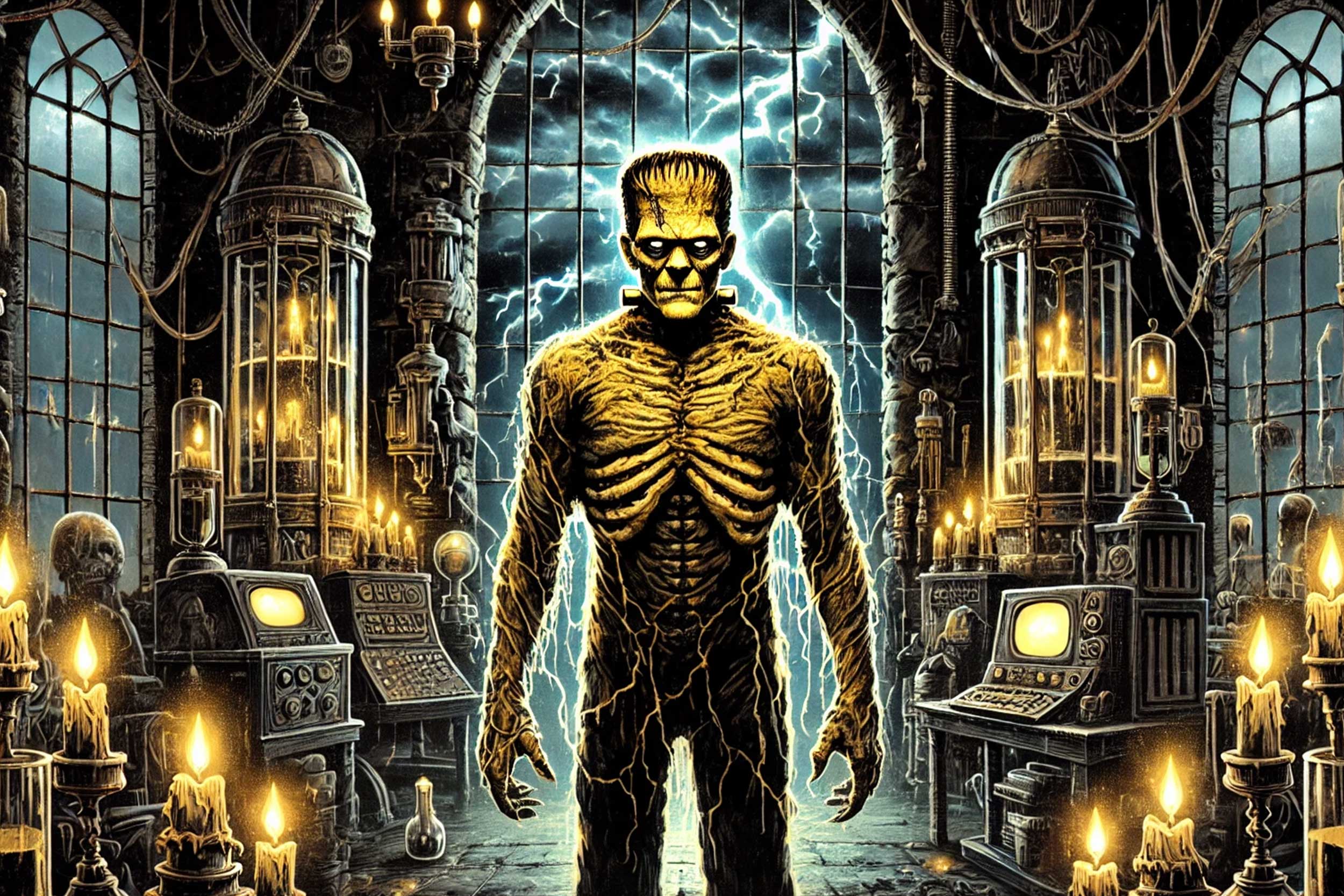Table of Contents
When you hear the name Frankenstein, you probably think of the hulking, green-skinned monster from countless movies and TV shows. But if you dive into Frankenstein by Mary Shelley, you’ll discover that the true story is far more complex and much more haunting. Written in 1818, this classic horror book is not just about a monster but also about the creator who brought him to life and the dark consequences of playing god.
Frankenstein is a novel that continues to captivate readers over 200 years later, thanks to its rich themes, intricate characters, and the chilling way it makes us question the boundaries of science and morality. This review will delve into the key elements that make Frankenstein such an enduring and terrifying read.
Victor Frankenstein's Narrative in Frankenstein by Mary Shelley
Victor's Obsession with Knowledge
At the heart of Frankenstein by Mary Shelley is Victor Frankenstein, a young scientist with an insatiable thirst for knowledge. From a young age, Victor is consumed by the desire to unlock the secrets of the universe. His obsession with alchemy and the secrets of life leads him down a dangerous path. Ambition drives him to the brink of madness, and his quest to create life becomes his undoing. Shelley’s portrayal of Victor’s obsession serves as a cautionary tale about the danger of unchecked ambition, a theme that resonates strongly even today.
The Creation of the Creature
The moment when Victor finally succeeds in bringing his creature to life is one of the most iconic scenes in literature. Yet, rather than being a triumph, it quickly turns into a nightmare. Despite Victor’s meticulous planning and his intention to create something beautiful, the creature that emerges is a terrifying, grotesque figure with watery yellow eyes and sallow skin. This stark contrast between Victor’s expectations and reality is one of the most powerful aspects of the novel. It’s a reminder that our creations can have consequences far beyond our control, a theme that Mary Shelley masterfully explores throughout the book.
Consequences of Victor's Actions
After creating the creature, Victor immediately regrets his actions. He abandons the creature, hoping to forget the horror he has unleashed. The creature, left to fend for itself, begins a quest for revenge that will destroy everything Victor holds dear. The deaths of Victor’s loved ones, including his brother William and his friend Henry Clerval, are direct results of his failure to take responsibility for his actions. This part of the story is a stark reminder of the moral and ethical implications of scientific discovery.
The Creature's Narrative in Frankenstein by Mary Shelley
The Creature's Struggle for Acceptance
One of the most surprising elements of Frankenstein by Mary Shelley is the depth of the creature’s character. Far from being a mindless monster, the creature is intelligent, articulate, and capable of deep feelings. After being abandoned by Victor, the creature experiences profound loneliness and rejection. His attempts to integrate into society are met with fear and violence due to his horrifying appearance. This part of the Frankenstein book shows how the creature’s initial innocence and desire for companionship are slowly twisted into a thirst for revenge against his creator and all of humanity.
The Creature's Turn to Revenge
The turning point in the creature’s narrative comes when he realizes that he will never be accepted by society. Driven by rage and despair, he demands that Victor create a female companion for him, arguing that he has a right to happiness just like any other living being. Victor’s refusal to create the companion seals the creature’s fate, and Victor’s as well. Shelley’s ability to evoke both sympathy and horror for the creature is one of the reasons Frankenstein remains such a powerful work.
Themes and Symbolism of Frankenstein by Mary Shelley
The Dangers of Unchecked Ambition
Throughout Frankenstein by Mary Shelley, the theme of unchecked ambition is central. Victor’s relentless pursuit of knowledge and his desire to push the boundaries of science lead to his ultimate downfall. Shelley’s message is clear: ambition without consideration of the consequences can lead to destruction. This is a theme that resonates not only in the context of the novel but also in today’s world, where technological advancements often outpace ethical considerations.
Isolation and Loneliness
Both Victor and the creature experience profound isolation in the novel. Victor isolates himself from his family and friends in his obsessive pursuit of knowledge, while the creature is isolated due to his monstrous appearance. This theme of loneliness drives much of the action in Frankenstein, leading both characters down paths of destruction. The novel suggests that this isolation is not just physical but also emotional, and it has devastating consequences for both characters.
The Duality of Creation and Destruction
In Frankenstein, creation and destruction are inextricably linked. Victor’s act of creating life ultimately leads to death and ruin, for himself and for those around him. The creature embodies this duality, he is a creation and a destroyer. Mary Shelley uses this duality to explore the complex nature of scientific discovery and the responsibilities that come with it. It’s a powerful reminder that creation is not inherently good or evil but depends on how it is used.
Conclusion
Frankenstein by Mary Shelley is much more than just a scary book. It’s a profound exploration of ambition, isolation, and the ethical boundaries of science. Shelley’s novel forces us to confront difficult questions about responsibility and the consequences of our actions. The characters of Victor and the creature are not just figures in a horror story but symbols of the dangers that come with pushing the limits of what it means to be human.






